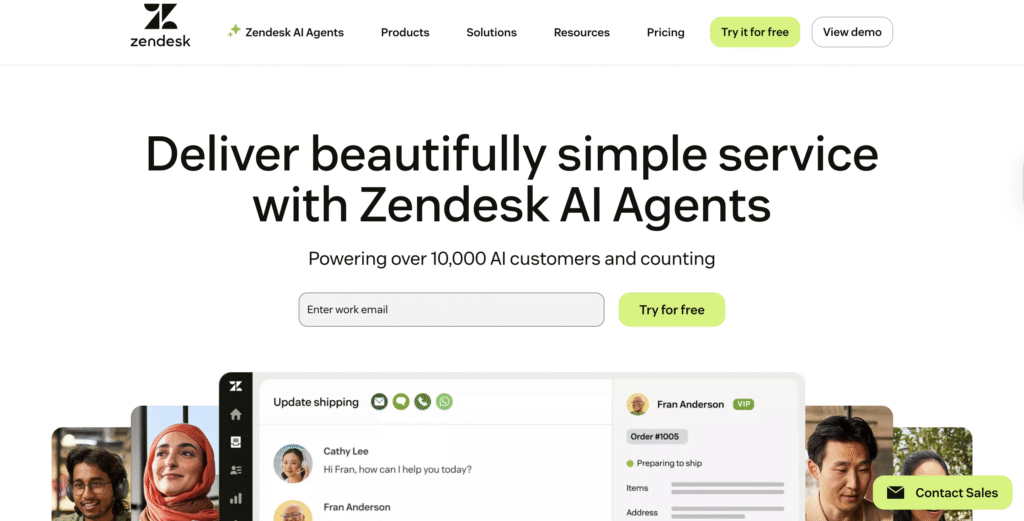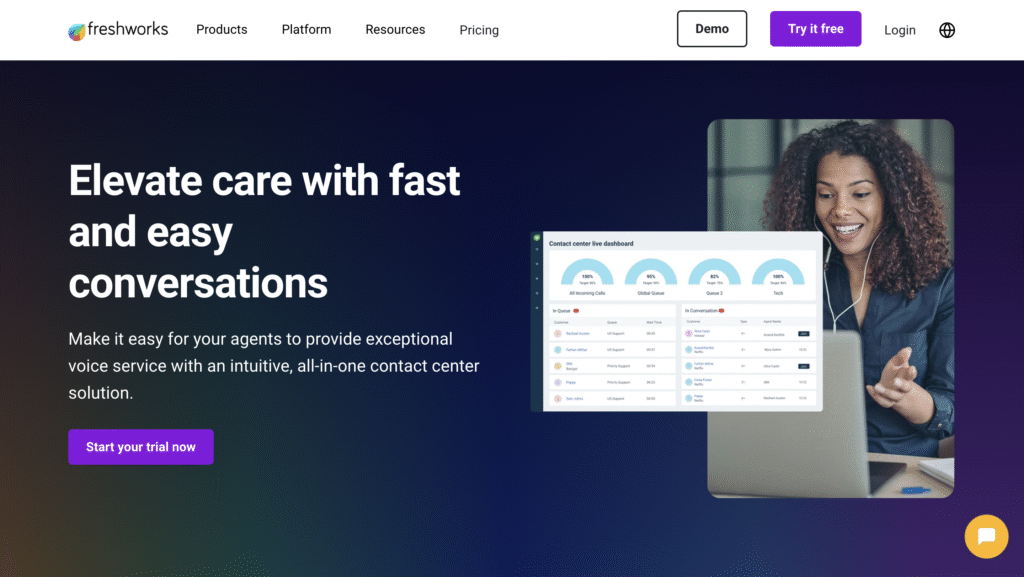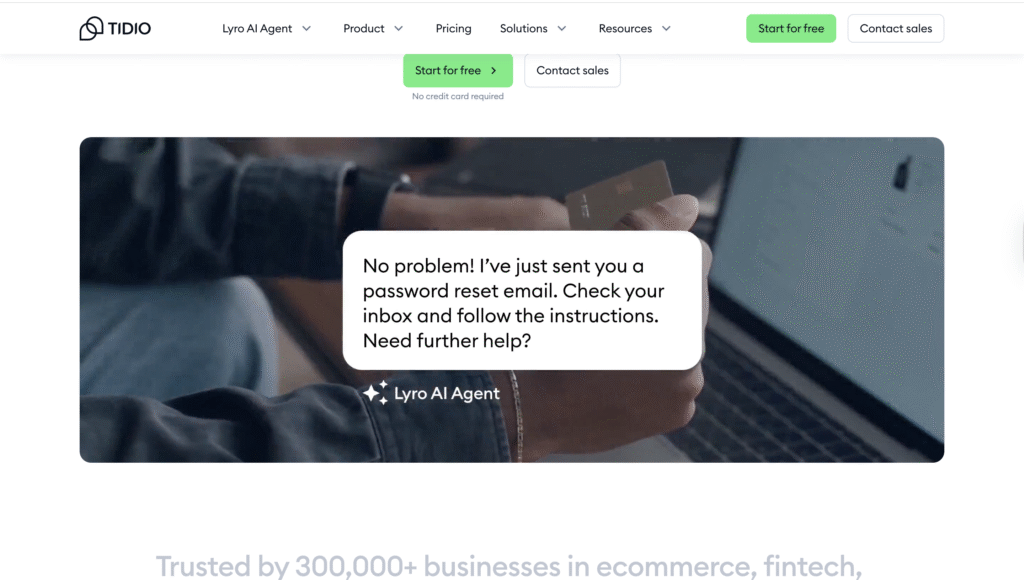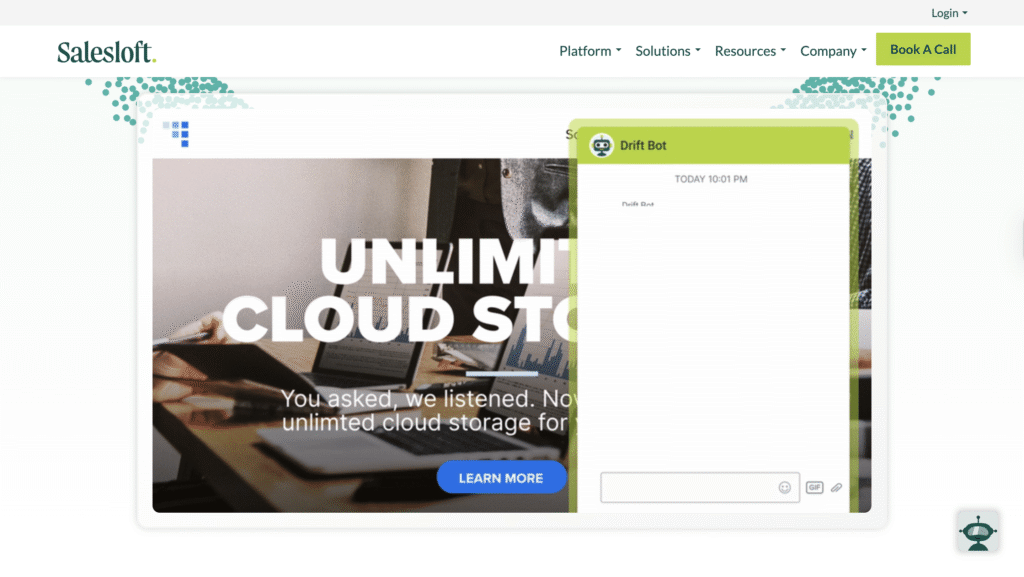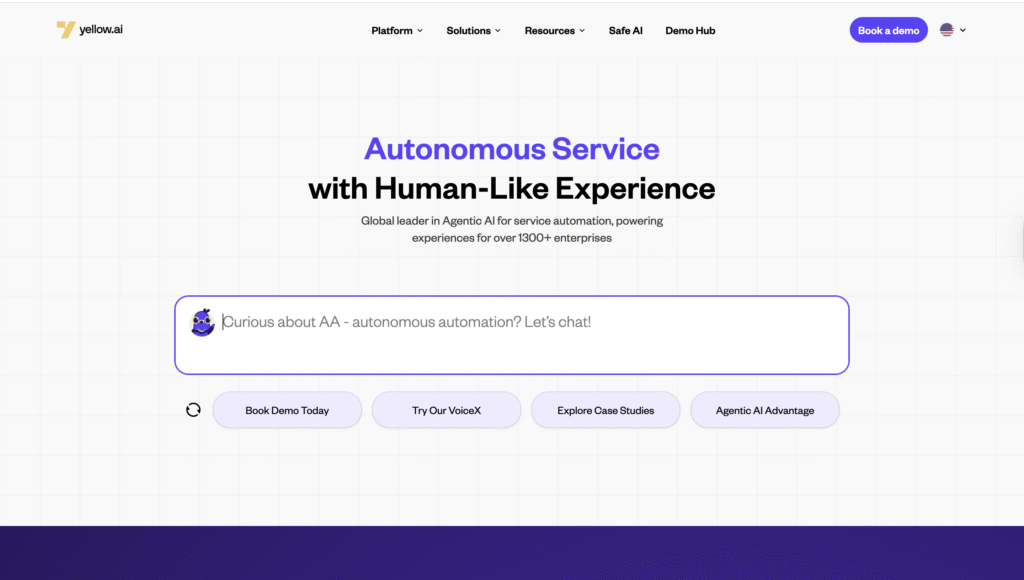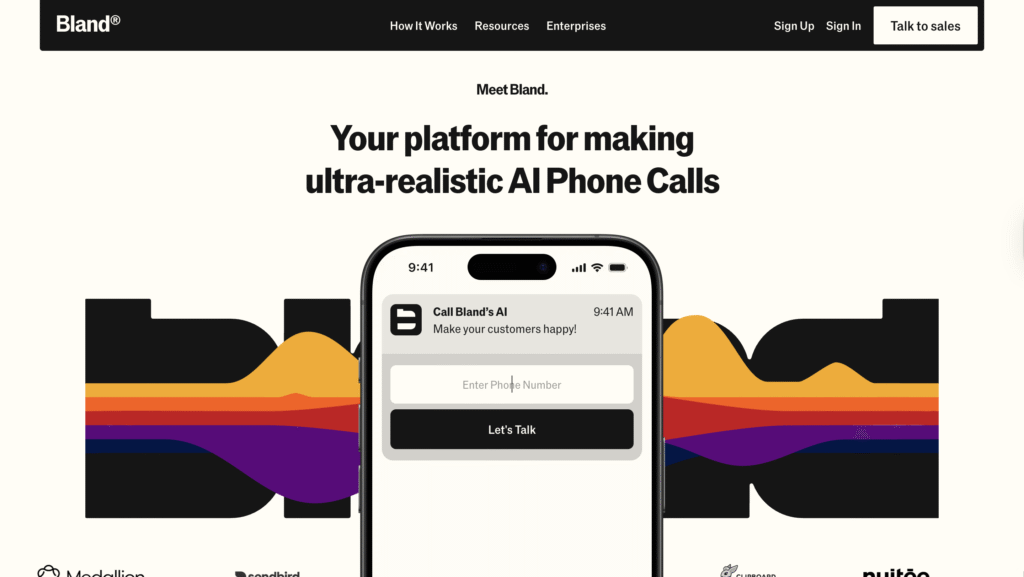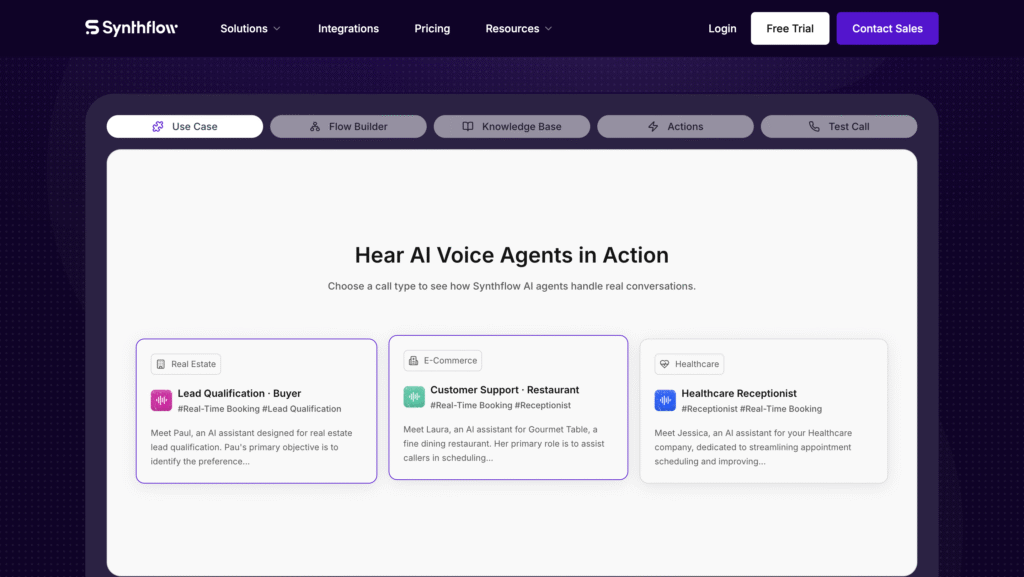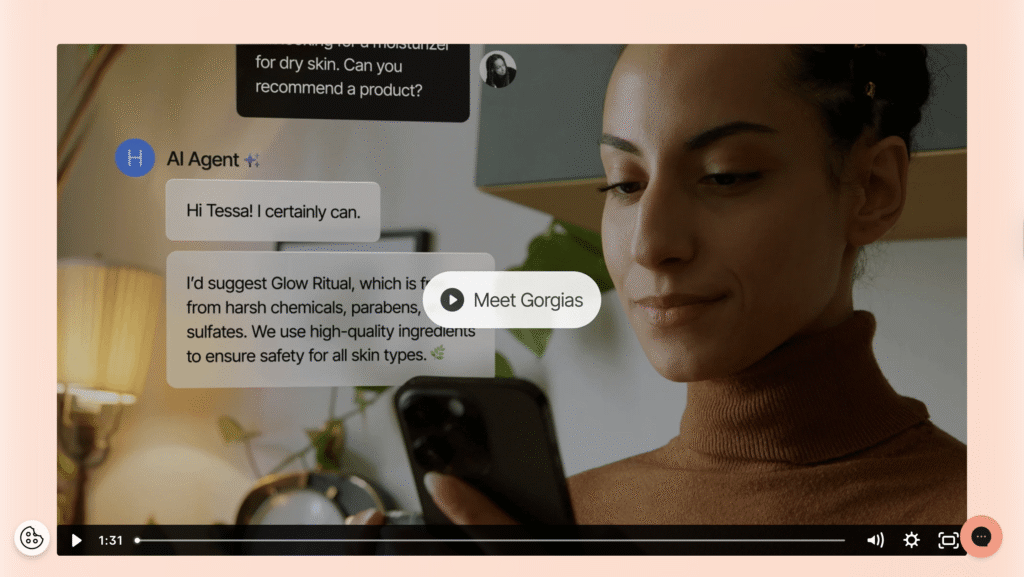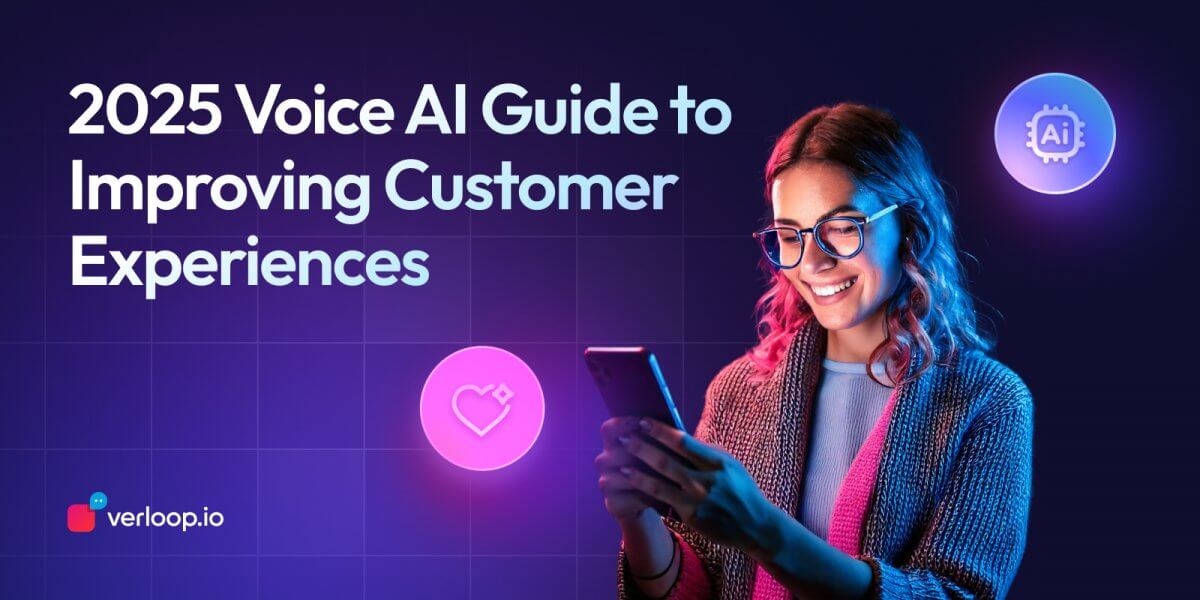
Top 10 Intercom Alternatives
- July 29th, 2025 / 5 Mins read
-
Aarti Nair
Why Businesses Are Looking Beyond Intercom
Let’s say you’ve just set up an AI Agent on your website, hoping it’ll take the pressure off your support team. But instead of fewer tickets and happier customers, your inbox is still overflowing and your team’s drowning in repetitive queries. Sound familiar?
That’s often the tipping point where businesses start exploring alternatives to Intercom.
Now, don’t get us wrong, Intercom is a powerful tool. Their AI agent, Fin, is often praised for doing the heavy lifting. It can resolve most queries without human help, integrates well with knowledge bases, and even improves over time. One company even said, “We’ve reduced our tickets by 70% since Fin started reading manuals for customers.”
Sounds impressive, right?
Then why are businesses still on the hunt for other options?
It often boils down to a few common gripes:
Cost: Great tech, sure—but not everyone has a Silicon Valley budget.
Overhead: While Fin may be easy to set up, fine-tuning workflows can take weeks or months, especially for teams with smaller bandwidth.
Customisation limits: You can train Fin, but if it loops the same response or misreads tone, your support can quickly go from “wow” to “why?”
And here’s the kicker: Intercom isn’t the only game in town anymore.
Over the last few years, the AI support landscape has exploded. Chatbots alone are expected to grow into a $46.6 billion market by 2029, and nearly 60% of B2B businesses already use them.
Voice AI?
That’s forecasted to touch $47.5 billion by 2034, with 67% of enterprises already calling it a core part of their strategy.
Clearly, companies aren’t just looking for automation, but they’re looking for solutions that fit them.
Whether you’re after better pricing, stronger voice capabilities, regional support, or just something that doesn’t “Fin-generate” generic replies, there are plenty of solid contenders.
So, what are your options?
In this blog, we’ll walk you through 10 great Intercom alternatives, each with its own strengths. Some are built for enterprise-level scale, others for scrappy startups. A few even let you blend voice and chat, so your customers can get help their way.
Let’s get into it.
What to Look for in an Intercom Alternative
Before we dive into the list, let’s take a moment to talk shop.
If you’re considering switching from Intercom, chances are you’re not just looking for a cheaper tool—you’re looking for a better fit. One that aligns with your team’s goals, your customers’ expectations, and—let’s be honest—your budget too.
But with so many options out there, how do you separate the “just another chatbot” from the platforms that’ll actually make your support smarter?
Here’s a quick checklist to keep handy:
1. Omnichannel Support
Your customers aren’t just sitting at their laptops. They’re messaging on WhatsApp, calling in on their lunch breaks, or asking questions through Instagram DMs. Your support tool needs to be wherever they are—not just on your website.
Unlike Intercom, which focuses heavily on in-app and website chat, some alternatives now offer built-in voice AI, social media integrations, and even SMS support—all in one dashboard.
2. AI That Actually Works
Remember the last time you talked to a bot that couldn’t understand your question, no matter how many times you rephrased it?
That’s a red flag.
The best tools today go beyond rule-based bots. They use AI agents trained on your content to understand intent, pick up context, and even hand over to a human at the right moment. The AI Agent market is expected to hit $50 billion by 2030, and for good reason—it’s transforming how support is delivered.
So, ask: Can the tool learn from your conversations? Can it summarise issues, spot trends, and adapt its tone? Or is it just throwing canned responses at your customers?
3. Easy Integration with Your Stack
A support platform should slide into your workflow, not bulldoze it.
Look for tools that play nicely with your existing CRM (like Salesforce or HubSpot), marketing tools, and ticketing systems. Bonus points if it supports custom APIs—especially if your business relies on internal systems.
4. Human + AI Collaboration
Even the best AI still needs a backup plan. Customers dealing with billing, product bugs, or sensitive information should be able to connect with a human—fast.
That’s where Intercom shines with its seamless handoff to live agents using Copilot. But many alternatives now offer this too, often with better agent assist tools, call whispering, or even AI-generated summaries.
Think of it as a buddy cop duo: AI handles the routine stuff, while your human agents swoop in when things get complex.
5. Transparent, Scalable Pricing
Here’s where many companies start side-eyeing Intercom.
If your support volume grows, so can your bill—and not always in a way that feels predictable. That’s why it’s important to look for tools that offer clear, modular pricing. Some even price by conversation or channel rather than seats or monthly active users.
In other words, find a tool that scales with you, not one that surprises you at the end of the quarter.
10 Powerful Intercom Alternatives You Should Know
By now, it’s clear: automation is no longer about rule-based bots spitting out scripted replies. We’ve entered the age of LLMs—Large Language Models—that can actually understand, generate, and adapt language almost like a human.
Think ChatGPT, but trained specifically for support conversations.
Tools like Intercom’s Fin are powered by these LLMs, allowing them to handle complex queries, pick up context from past interactions, and even respond in your brand’s tone of voice. And it’s not just Intercom doing this—many other platforms are now tapping into LLM technology to deliver smarter, more human-like support.
So, what makes these Intercom alternatives stand out?
Some focus on hyper-personalised messaging, some go big on voice AI, and others offer affordable yet powerful bot builders with LLMs working under the hood. Each comes with its own flavour and strength.
Let’s explore the best of the bunch.
#1. Verloop.io
Let’s say your customer just wants a refund update. Should they wait on hold, switch channels, or repeat their order number five times? Ideally—not at all.
That’s the kind of frustration Verloop.io is built to eliminate.
While Intercom’s Fin is known for handling complex queries, Verloop.io brings that intelligence to voice, chat, and agent workflows—all from one unified platform. If you’re looking for something that goes beyond a chatbot and into the realm of customer support orchestration, Verloop.io should be high on your list.
Voice AI That Talks Like It Means It
Unlike many platforms that bolt on voice as an afterthought, Verloop.io builds voice into its DNA. Its Voice AI Agents are powered by Large Language Models (LLMs), meaning they’re trained not just to respond, but to understand context, carry on conversations, and adapt tone.
You can even build your own voice persona. Want your bot to sound reassuring during a refund call or crisp during a booking flow? Done.
And here’s the clever bit: you can test your voice AI without placing real calls. No more wearing out your mobile plan (or your patience) just to run a few scenarios. It’s all previewable right within the platform.
Multilingual. Omnichannel. Out of the Box.
Customers rarely stick to one platform, and neither should your support.
Verloop.io lets you engage users across WhatsApp, Instagram, web chat, voice, and more—all within a single system. Its AI agents can switch contexts mid-conversation and support 80+ languages, so you’re covered whether your customer speaks Hindi, Arabic, or French.
Oh, and it’s worth noting: Verloop.io is an official WhatsApp Business Solution Provider (BSP). So if you’re relying on WhatsApp for support or marketing, you’ll benefit from native integrations, verified templates, and early access to new features.
One Dashboard. Full Visibility.
If switching between platforms to track conversations feels like flipping through TV channels with a broken remote, you’ll appreciate this.
Verloop.io offers a single dashboard to manage:
All conversations—voice, chat, bot, and agent-led
Agent performance and activity tracking
Custom reports and CSAT trends
SLA adherence, drop-offs, and issue heatmaps
And with Spark, you don’t even have to comb through past chats manually. It’s an AI-powered auditing tool that analyses conversations for quality, flags coaching opportunities, and auto-suggests ways to improve.
A Copilot for Agents, Not Just Customers
While many tools put AI in front of customers, Verloop.io also puts it behind your agents.
Copilot is like an AI sidekick—it listens in (respectfully), offers response suggestions, pulls up past context, and helps agents close queries faster without flipping tabs.
Need to ensure consistent answers across your team? Enter AnswerFlow—a smart builder that lets you design guided responses for any kind of agent: AI, voice, or human. And since it works across all your channels, your support stays sharp, no matter where the conversation starts.
Integrates With the Tools You Already Use
Whether you’re running campaigns on CleverTap or MoEngage, handling payments via Razorpay, or managing leads through HubSpot or LeadSquared—Verloop.io plugs right in. It supports 100+ integrations, and the no-code widget builder makes it easy to customise your support UI.
No developers? No problem.
Why It’s a Strong Intercom Alternative
While Intercom shines with Fin’s smart answers and seamless CRM connections, Verloop.io matches that intelligence—and adds depth across voice, agent tooling, and real-time analytics.
It’s ideal for teams that want to automate support without losing the human touch, and need a platform that’s just as useful for agents as it is for customers.
If Intercom is your customer inbox, Verloop.io is your full command centre.
#2. Zendesk – A Ticketing-Led System with AI Add-Ons
Zendesk is a long-time player in the support space, offering a ticket-first approach to customer service. While it has added AI capabilities in recent years, its core remains centred around email and case management, with tools layered on to handle chat, voice, and social messaging.
AI Features for Automation and Scaling
Zendesk’s AI is built using data from billions of support interactions and can assist in automating replies, triaging tickets, and powering self-service flows. The AI can be applied across the support experience—whether it’s a help centre bot, admin workflow, or agent-side suggestion tool.
That said, many features like advanced reporting, custom dashboards, and deeper AI integrations are gated behind higher-tier plans.
Omnichannel, But with a Ticketing Backbone
Zendesk does support multiple channels—chat, email, WhatsApp, social messaging, and voice—but all conversations are routed into a single ticketing queue. This can be ideal for teams used to working from a central inbox, but may feel restrictive for businesses prioritising real-time conversations or intent-based routing.
The Unified Agent Workspace makes it possible for agents to track a customer’s journey across platforms. However, some users report that Zendesk’s native real-time visibility into agent performance is limited, particularly in the lower pricing tiers.
Setup and Integration
One of Zendesk’s strengths is its ease of implementation. It comes with pre-configured workflows and templates, so teams can get started without needing technical support. It also supports 1,200+ app integrations, from CRM systems like Salesforce and HubSpot to analytics tools like Snowflake.
However, when it comes to customisation—especially for SLAs, agent dashboards, or performance tracking—users often rely on third-party apps or developers to get the level of flexibility they need.
Feedback Summary
Pros: Centralised inbox, strong ticketing and email support, plug-and-play integrations.
Cons: Limited custom reporting in lower tiers, slower support responses on basic plans, advanced features (like quality management and real-time dashboards) require workarounds or higher pricing plans.
Use case fit: Teams with high email volume or traditional support models, who need structure over speed.
Pricing (Billed Annually per Agent)
Support Team: $19
Support Pro: $55
Support Enterprise: $115
Suite Team (Omnichannel): $55
Zendesk works well for businesses looking to standardise ticket management across channels and already using platforms like email and forms as their primary support paths.
But if you’re prioritising:
Real-time, conversational experiences
Native voice AI and bot persona building
A single dashboard for all customer interactions—voice, chat, and agents
Inbuilt tools for agent performance, audits, and multi-language automation
…then Zendesk may fall short without additional tools or enterprise-level upgrades.
#3. Freshdesk Contact Centre – A Basic Yet Flexible Cloud Phone System
If you’re looking for a phone-first support tool with minimal setup hassle, Freshdesk Contact Center (formerly Freshcaller) offers a straightforward solution for managing voice conversations. It’s part of the Freshworks ecosystem and focuses on making voice support accessible, particularly for distributed or remote teams.
Simple, Hardware-Free Phone Setup
Freshdesk Contact Center allows teams to run their call centre without traditional hardware. Agents can answer calls via desktop, mobile apps, or laptops, which makes it suitable for remote or hybrid environments.
Numbers are available in 90+ countries, and setting up or scaling operations (like adding credits, numbers, or agent licences) is relatively quick. It’s designed for cost-conscious teams that want a reliable voice solution without a large upfront investment.
Call Routing, Analytics & Reporting
The platform includes core features like:
Call routing and IVR flows
Call masking and queue management
Basic automation rules for handling missed or overflow calls
Admins can access real-time dashboards to track call performance and basic agent metrics. However, more advanced functionality—such as call transcription or deep workflow automation—is limited or only available in higher-tier plans.
Integrations with Helpdesks & CRMs
Freshdesk Contact Center integrates with other Freshworks products (like Freshdesk Support) and third-party tools such as HubSpot and Zoho CRM. This allows support and sales teams to link call records with customer profiles and streamline issue tracking.
That said, some users note limitations in the mobile app, and setting up certain automations or ticket field rules often requires workarounds or support assistance.
Pricing (Billed Annually per Agent)
Growth: $15/month
Pro: $39/month
Enterprise: $69/month
The entry-level pricing is accessible, but AI capabilities and custom automation options are mostly locked behind higher plans, so teams scaling quickly may hit limits unless they upgrade.
Freshdesk Contact Centre is a fit for businesses that:
Primarily rely on voice support
Want an easy-to-deploy call centre solution
Already use or plan to use other Freshworks tools
It may not be suitable if you need:
Native voice AI agents
End-to-end chat and voice automation
A unified dashboard for chat, bot, and voice workflows
LLM-powered AI assistants or multilingual AI agents
Compared to Intercom or Verloop.io, Freshdesk Contact Centre focuses more on foundational voice workflows than AI-driven, conversational support.
#4. Tidio – Lightweight Live Chat with Basic AI Capabilities
Tidio is a customer communication tool designed for small to mid-sized businesses, particularly in eCommerce and DTC. It combines live chat, help desk ticketing, chatbot automation, and AI agent functionality into one interface.
While Intercom and Verloop.io offer deeper customisation and enterprise-grade AI tooling, Tidio is positioned as an easy-to-deploy solution for teams looking to improve engagement and automate common support queries, especially across website chat and social platforms.
Chat-First Support with Multichannel Inbox
Tidio gives businesses a real-time chat widget with built-in features like:
Typing preview
Canned responses
File sharing
Chat transcripts
All incoming messages from Instagram, Messenger, WhatsApp, email, and your website land in one shared inbox. This helps small teams manage high chat volumes without switching tabs.
The platform also offers a mobile app that many users rely on for on-the-go access.
Chatbot Automation with ‘Flows’
For rule-based automation, Tidio includes a no-code visual builder to create workflows for FAQ deflection, abandoned cart recovery, feedback collection, and more. There are 40+ pre-built templates tailored for e-commerce use cases.
That said, deeper use cases like CRM actions or data enrichment often require manual setup or third-party integration, and some workflow features are only available on paid tiers.
Lyro – AI Agent for Basic Query Handling
Tidio’s AI chatbot—Lyro—can answer questions using your knowledge base content. It’s designed to resolve up to 64% of common queries without human intervention and is capable of handling multiple languages, including English, Spanish, and German.
Lyro doesn’t hallucinate or “make up” answers—it sticks strictly to your uploaded content. However, as per user reviews, it currently performs best with simple, repetitive queries, and may not handle complex or intent-heavy conversations as well as more advanced LLM-based agents.
eCommerce Integrations
Tidio integrates with Shopify, WooCommerce, Klaviyo, and other e-commerce tools. It supports product recommendations, cart previews, and order lookup inside the chat window, making it useful for storefronts looking to boost conversion and reduce cart abandonment.
Some users report needing to manually troubleshoot order-related flows after updates, and expect stronger support around setup guidance.
Ticketing System
Tidio includes a built-in ticketing system for handling chats and emails asynchronously. Features include tagging, prioritisation, agent tracking, and spam filters. While basic, it covers the essentials for small teams handling mixed communication volumes.
Pricing (Billed Monthly)
Free Plan: 50 AI conversations + basic chat features
Starter: From $24.17
Growth: From $49.17
Plus: From $749
Higher-tier plans unlock more AI capacity, custom branding, automation workflows, and integrations.
Tidio is a good choice for teams that:
Want a simple chat widget with social channel integration
Need a basic AI assistant to handle FAQs
Prefer to manage support and marketing flows in one lightweight tool
However, it may fall short for businesses that need:
Deep voice or AI agent personalisation
Custom reporting, agent audits, or real-time dashboards
Advanced LLM-driven bots trained on nuanced customer queries
Compared to Intercom or Verloop.io, Tidio is more of a plug-and-play solution suited for quick wins and smaller setups, not a fully customisable, AI-first support platform.
5. Drift – B2B Sales Conversations, Not Customer Support
Drift positions itself as a buyer engagement platform, designed to convert leads, book meetings, and qualify prospects in real-time. While platforms like Intercom and Verloop.io focus on automated support and customer service, Drift is primarily built for B2B sales acceleration.
Its strength lies in making websites more conversational for visitors and turning that interest into pipeline.
Sales-Focused Live Chat & Meeting Booking
At its core, Drift offers a chat widget that helps sales teams connect with site visitors the moment they land on a pricing or product page. Chatbots are used to ask pre-qualification questions, route leads to the right rep, or book meetings directly, especially useful when sales reps are offline.
It also includes features like:
Real-time visitor identification
Account-based targeting (see which company is browsing)
CRM integrations (Salesforce, HubSpot, etc.)
Lead routing and calendar booking
That said, support workflows like ticketing, order tracking, or escalations aren’t a core focus.
AI-Led Engagement, But With a Sales Lens
Drift’s AI functionality is designed to help qualify inbound leads, using conversational flows that ask relevant questions and adapt based on visitor behaviour. It can personalise conversations by tracking page visits and company attributes, which can boost engagement rates.
However, it’s not a full-fledged AI agent solution. You won’t find multilingual support, voice automation, or deep LLM-powered troubleshooting like you would with Verloop.io.
Its automation is mainly aimed at guiding a prospect to a form, calendar, or rep—not handling post-purchase queries or technical support.
CRM and Sales Tool Integrations
Drift integrates well with sales ecosystems—think Outreach, Salesloft, Marketo, Pardot, and Gmail. This makes it appealing for SDRs and account executives who want their leads synced and nurtured across tools.
However, some users mention steep learning curves, feature bloat, and inconsistent support experiences, especially when trying to configure advanced flows or integrate across multiple departments.
Drift is most effective when it’s embedded into a mature sales process with internal alignment between SDR, marketing, and CS.
Pricing (Billed Monthly)
Premium: Starts at $2,500/month
Advanced/Enterprise: Custom pricing
Pricing is high compared to other platforms, especially if you’re looking for a general-purpose chatbot or support automation. Drift is built and priced for sales-driven B2B teams, not lean support teams.
Choose Drift if your priority is:
Engaging and qualifying B2B sales leads
Giving SDRs real-time visitor context and booking tools
Personalising outreach based on buyer behaviour
It may not be the right fit if you’re focused on:
Omnichannel support
Voice AI or agent assist features
Automated quality audits, answer flow builders, or agent productivity tracking
Customer support ticketing and escalations
Unlike Verloop.io or Intercom, Drift is a marketing and sales conversation tool first. Support automation is limited, and custom AI capabilities are focused on lead conversion, not post-sale care.
#6. Yellow.ai – Broad Multichannel Automation, But Mixed Delivery Experience
Yellow.ai offers a generative AI-powered platform for enterprises looking to automate customer service across multiple touchpoints. It positions itself as a no-code/low-code solution for deploying chatbots and AI agents across web, WhatsApp, Instagram, and other messaging channels.
With a customer base spanning 85+ countries and 135+ languages, Yellow.ai aims to scale automation while reducing operational costs.
However, despite strong positioning, user feedback suggests inconsistent delivery timelines, support issues, and challenges with implementation.
AI-Powered Automation Across Channels
Yellow.ai is built on a multi-LLM architecture, trained on over 16 billion conversations annually. It supports:
FAQ automation
Transactional messaging (e.g., WhatsApp)
Appointment scheduling flows
Low-code chatbot building
Custom integrations with business tools
Users appreciate the flexibility and range of integration options. The no-code interface allows non-technical teams to configure basic bots quickly. However, some report that complex customisation and integrations require more effort than initially expected.
NLP and Multilingual Capabilities
The platform uses NLP for better contextual understanding and supports multilingual deployments, which is helpful for businesses with global or regional operations. Yellow.ai also claims to deliver personalised experiences through behaviour-based automation.
But unlike platforms offering voice AI, answer flow design, or in-conversation agent assist, Yellow.ai’s AI focus is more on automating routine text-based interactions across messaging apps.
Analytics and Reporting
Yellow.ai includes basic analytics tools to track bot performance, monitor conversation drop-offs, and improve flows. However, several users have noted the lack of strong reporting and agent performance dashboards, especially when compared to tools that focus on real-time insights and quality audits.
There’s also limited visibility into agent activity or support performance at scale, which may be a concern for businesses prioritising QA and agent coaching.
Common User Concerns
Despite its capabilities, some enterprise users have raised issues around:
Delayed implementations (5+ months in some cases)
Lack of communication and accountability from support
Unmet expectations post-sale
Limited technical support during rollout
Ongoing maintenance challenges
These are important considerations, especially for businesses that need mission-critical deployments or active implementation support.
Yellow.ai is positioned for enterprises that:
Need multilingual chatbot automation
Want to scale messaging across channels (WhatsApp, web, Instagram)
Prefer a no-code chatbot builder for routine flows
It may not suit teams looking for:
Fast implementation with close support
Voice AI or AI agent handovers
Agent-side tools like Copilot, conversation audits, or answer flow integrations
Real-time performance dashboards and conversation-level QA
Compared to Intercom and Verloop.io, Yellow.ai offers breadth in messaging automation, but with reported inconsistencies in reliability and depth in agent support tooling.
#7. Bland AI – Early-Stage Voice AI With Mixed Feedback
Bland AI positions itself as a voice-first AI platform built to automate outbound phone conversations. It’s marketed toward sales teams and lead qualification use cases, where AI agents are expected to carry human-like conversations over calls.
The platform has attracted attention for its intuitive interface and promise of low-latency voice automation, but user experiences have been sharply divided.
Voice-Led AI for Outbound Conversations
Bland AI focuses specifically on automating phone calls using AI agents. Some users highlight the platform’s ability to:
Save time on manual follow-ups
Reduce repetitive outreach
Deliver low-latency audio experiences
It is designed to simulate live phone calls, replacing cold calls or basic inbound routing. However, reviews suggest the product is still evolving, and the experience often doesn’t match expectations set by product demos.
Consistency and Reliability Issues
While a few users praise the design, speed, and team responsiveness, a significant number report:
Call interruptions and dropped audio
AI that fails to respond mid-call
Lack of control over conversation flow
Poor support and limited resolution of issues
Several users note that even after hours of setup, calls didn’t function properly, with the AI failing to speak, getting cut off, or causing frustration for end customers.
Sales-First, Not Support-Ready
Bland AI is built with a sales mindset—ideal for experimenting with automated outreach or basic qualification flows. It does not include key features found in more mature support platforms, such as:
Chat + voice handover
Agent assist tools
Quality audits
Multichannel support
There’s also no clear support for multilingual conversations, integrations, or performance analytics—features that are standard in platforms like Verloop.io.
Bland AI is suited for:
Teams experimenting with automated outbound calling
Early-stage voice testing at a low technical barrier
Sales functions looking to test call scripts or follow-up flows
It may not be ideal if you need:
Reliable, production-grade voice automation
Post-call reporting, agent routing, or CRM workflows
Strong customer support and onboarding guidance
Overall, Bland AI may suit lightweight, outbound scenarios—but lacks the robustness, conversational depth, and tooling expected for customer support or complex voice automation use cases.
#8. Kore.ai – Enterprise-Grade AI with Strong Customisation, But Steep Learning Curve
Kore.ai is a platform aimed at large enterprises looking to deploy advanced conversational AI for customer service, internal operations, and contact centres. It offers a modular suite of tools—Automation AI, Contact Center AI, Agent Assist, and AI Search—allowing companies to build complex bots, automate workflows, and connect to external data sources.
Unlike Intercom or Verloop.io, Kore.ai isn’t built for quick plug-and-play deployment. It’s designed for enterprises that need high customisability and have teams capable of building, training, and managing AI agents at scale.
No-Code Bot Building with Multi-LLM Support
Kore.ai’s platform supports both chat and voice bots. Its low-code/no-code interface allows developers and non-technical teams to:
Build bots using prebuilt nodes and workflows
Integrate external data via APIs or RAG (Retrieval-Augmented Generation)
Plug in multiple LLMs (Large Language Models)
Deploy bots across internal and customer-facing channels
This flexibility is ideal for businesses that want full control over bot logic and integration—but it comes with a steeper setup time and requires familiarity with the platform’s architecture.
Multichannel + Agent Assist Capabilities
The platform supports multichannel deployment across web, WhatsApp, IVR systems, and internal tools. Teams can also use Agent Assist features that provide response suggestions, sentiment analysis, and context pulling—though these need to be configured per use case.
Compared to platforms like Verloop.io, which offer these capabilities out of the box, Kore.ai’s agent tools require more manual setup and often depend on internal dev or implementation partners.
Analytics, Automation, and Use Case Coverage
Kore.ai includes:
Process automation for internal workflows (e.g., IT helpdesk, HR service)
Analytics tools for tracking usage and performance
Custom workflows for 24/7 support automation
However, some users report response latency when connected to LLMs, occasional UI instability, and a lack of simplified onboarding, especially for new users or smaller support teams.
Kore.ai is built for enterprises that:
Require deep customisation and support across voice + chat
Want to build conversational IVR or internal automation workflows
Have in-house teams or partners to manage bot design, LLM use, and integrations
It may not be ideal for:
Smaller teams looking for fast implementation
Support teams needing ready-made dashboards, audits, or agent tracking tools
Businesses without internal technical support
Compared to Intercom and Verloop.io, Kore.ai offers more enterprise control and flexibility, but at the cost of ease of use, onboarding speed, and simplicity in support-focused workflows.
#9. Synthflow – No-Code Voice AI for 24/7 Outreach and Support
Synthflow is a no-code voice AI platform that enables businesses to automate customer interactions over calls, without writing a single line of code. From scheduling appointments and qualifying leads to running AI-driven outbound campaigns, Synthflow is especially popular with SMBs, agencies, and growing teams in sectors like real estate, healthcare, legal, and e-commerce.
While Intercom offers AI for chat-first experiences, Synthflow focuses squarely on voice automation—helping teams create voice agents that can converse, follow logic flows, and even integrate with CRMs and apps like Zapier, Twilio, and HubSpot.
Quick Setup, Powerful Integrations
Synthflow stands out for its drag-and-drop Flow Designer and plug-and-play integrations with databases, messaging tools, and cloud services. Users consistently highlight how easy it is to go live within 24 hours, often connecting Synthflow to their CRM or WhatsApp workflows to automate outreach at scale.
For users with developer chops, it also supports YAML-based configurations and CLI workflows—giving the flexibility to treat voice agents like structured pipelines.
24/7 Voice Agents with Human-Like Interactions
Synthflow’s voice agents are powered by high-quality voices from partners like ElevenLabs. This helps them sound more human, handle objection flows, and support multilingual campaigns (e.g., English + Spanish). Teams use Synthflow to:
Run sales outreach during off-hours
Set up AI receptionists for inbound calls
Send SMS follow-ups with booking links
Scale voice support without hiring more reps
Unlike Intercom’s Fin (for chat), Synthflow doesn’t do chat automation, but for outbound and inbound voice automation, it’s one of the most accessible platforms around.
Where Synthflow Falls Short
Despite its ease of use, users report a few limitations:
Support SLAs can be slow, especially during edge-case integration issues.
Trial minutes are limited, and testing can burn through credits quickly.
The dashboard lacks deep analytics like conversation drop-offs or conversion insights.
Advanced flows require experimentation, and users wish for more real-world templates.
These trade-offs make Synthflow best suited for teams that want to move fast and iterate, rather than build deeply customised enterprise systems.
Synthflow is ideal for businesses that:
Want to automate voice-based interactions with no coding
Need to scale sales or support outreach 24/7
Value fast onboarding, intuitive interfaces, and CRM integrations
It may not be ideal for:
Teams needing detailed analytics out-of-the-box
Users who require chat-first platforms or deep SLA support
Enterprises looking for robust agent assist or complex, multi-agent orchestration
If you’re focused on affordable voice automation with minimal setup, Synthflow is a strong Intercom alternative, particularly for outbound campaigns and frontline call deflection.
#10. Gorgias – Ecommerce-Focused AI Helpdesk with Omnichannel Support
Gorgias is a helpdesk platform designed specifically for e-commerce brands, helping them streamline support and drive conversions through AI-powered chat, email, and social media management. Unlike Intercom, which caters to a broader SaaS audience, Gorgias integrates deeply with e-commerce platforms like Shopify, BigCommerce, and Magento, making it easier for brands to manage customer support across the entire buying journey.
It brings together customer conversations from email, live chat, Instagram, Facebook, and more—into one shared inbox—and layers in automation to reduce response times and ticket loads.
Unified Inbox with Built-in Automations
Gorgias is best known for its centralised inbox, which helps support teams manage emails, DMs, ad comments, and chatbot queries in one place. It supports:
Macros and triggers to handle repetitive queries
Tagging and assignments for internal routing
Rule-based automation to free up agent bandwidth
This setup helps smaller teams handle high volumes of inquiries, especially during sales spikes or launches.
Tailored for Shopify and Ecommerce Workflows
Where Intercom offers broader SaaS workflows, Gorgias is tuned for e-commerce-specific tasks—like:
Editing orders
Managing subscriptions
Providing shipping updates
Auto-replying to comments on Instagram or Facebook ads
Its deep integrations with e-commerce platforms allow agents to take actions directly from the Gorgias dashboard, like refunding an order or viewing past purchases, without switching tools.
Where Gorgias May Fall Short
While Gorgias offers strong support tools, it comes with some trade-offs:
Analytics tools are basic and still evolving
Pricing scales with ticket volume, which can get expensive for brands with fluctuating query volumes
Initial setup can feel complex for first-time helpdesk users
Occasional glitches or bugs in UI and reporting
It also lacks native voice automation, so teams looking for AI-powered voice agents may need to pair it with other tools.
Gorgias is ideal for:
E-commerce brands wanting omnichannel support with store integration
Small to mid-sized teams managing high-volume, repetitive queries
Teams who want chat, email, and social media management in one place
It may not be a fit for:
SaaS or B2B companies with complex sales workflows
Teams needing voice support or outbound calling
Startups with tight budgets and low ticket volumes
If your business runs on Shopify and you’re looking for a helpdesk tailored for faster ticket resolution and better agent productivity, Gorgias is a strong alternative to Intercom, especially for chat-first customer service.
Feature Comparison Table
| Feature / Platform | Intercom | Verloop.io | Kore.ai | Synthflow | Gorgias |
|---|---|---|---|---|---|
| Target Audience | SaaS, startups, general B2B | B2C, enterprise, support-heavy sectors (BFSI, e-comm) | Enterprise, global CX teams | SMEs, agencies, e-comm, healthcare | Ecommerce brands |
| Channels Supported | Chat, email, helpdesk, product tours | Chat, voice, WhatsApp, FB, IG, web | Chat, voice, IVR, WhatsApp, email | Voice only (call-based AI agent) | Chat, email, Instagram, Facebook |
| LLM / Gen AI Capabilities | Fin (Intercom’s own AI) | Built-in Gen AI (Summarise, Expand, Tone, Answerflow) | Pluggable LLMs with agent orchestration, RAG | No-code agent builder, supports LLM logic | Basic AI suggestions and macros |
| Bot Customisation | Moderate (playbooks, workflows) | High (intent training, entity, multi-turn) | High (no-code & role-based bot design) | Voice workflows with logic branching | Basic automations (macros, rules) |
| Voice AI / Call Support | No native voice AI | Native Voice AI Agent with low latency | Yes (Conversational IVR, voice bots) | Yes (voice only) | No |
| Analytics & Insights | Standard + add-ons | Advanced + Agent performance + Quality audit | Enterprise-grade analytics | Basic (requires improvement) | Improving but limited |
| CRM / E-comm Integrations | HubSpot, Salesforce, custom APIs | Freshdesk, Salesforce, custom APIs | Wide ecosystem support + APIs | Zapier, Hubspot, Twilio | Shopify, Magento, BigCommerce |
| Onboarding & Ease of Use | Easy for SaaS teams | Guided onboarding for enterprise teams | Requires learning curve | Easy-to-use no-code interface | Very beginner-friendly |
| Pricing Transparency | Customised enterprise pricing | Transparent on request | Enterprise only | Transparent plans (from $29/mo) | Clear pricing (from $10/mo) |
| Best For | SaaS product teams | CX teams looking to automate support across channels | Enterprises needing a full-stack AI platform | SMEs needing fast voice automation | Ecommerce support teams |
How to Choose a Customer Support Automation Suite
Choosing the right automation platform isn’t just about ticking off features — it’s about finding a solution that matches your business model, team structure, and growth goals. Here’s what you should evaluate before making a decision:
1. Support Channel Coverage
Start with the basics. Where do your customers reach out — chat, email, WhatsApp, voice calls, social media? Choose a platform that covers the most-used channels for your business. For example:
Voice-heavy businesses need tools like Verloop.io or Synthflow.
Ecommerce brands may prioritise chat + Instagram/Facebook comments, where tools like Gorgias shine.
2. Level of AI Maturity
Not all “AI” is equal. Look for:
LLM-powered bots if you want generative, human-like replies.
Agent assist tools for internal productivity (e.g. summary, tone adjustment).
Intent + entity recognition if your use cases are more rules-based.
If you’re looking to scale quickly with minimal manual training, platforms with built-in Gen AI and Answerflow-style routing (like Verloop.io or Kore.ai) work better than basic keyword-trigger bots.
3. Ease of Use vs. Depth of Customisation
Some platforms are beginner-friendly but rigid. Others are highly configurable but need more setup:
Low-code/no-code builders let teams move fast without engineering help.
Agent handoff logic, fallback flows, and intent training are must-haves if your queries are complex.
Balance usability with the flexibility your team needs to adapt.
4. Voice AI Capability (if relevant)
If voice support is part of your roadmap, don’t compromise on latency, clarity, or turn-taking. Test for:
Low-latency call handling
Context retention across turns
Voice activity detection (VAD)
Only a few platforms handle voice automation natively — test this thoroughly during pilot stages.
5. Integrations & Ecosystem Fit
Your automation suite should plug into your current stack — CRM, ecommerce platform, support ticketing, analytics tools. Without good integrations, even the best AI won’t deliver value.
Tip: Look for open APIs, ready-to-use connectors, and data sync options.
6. Pricing Transparency and Scalability
Check for clear pricing tiers, minute-based billing (for voice), or ticket-based plans. More importantly:
Does the pricing scale with usage or lock you into rigid thresholds?
Are AI features billed separately?
Ensure you’re not paying extra just to automate basics.
Change your Voice AI Agent Today!
Whether you’re an ecommerce brand looking to manage social DMs at scale, or a mid-market business aiming to unify voice and chat support, the right platform depends on your specific needs — channels, team size, integration stack, and automation goals.
Evaluate your options critically. Look beyond brand names. Prioritise tools that help you scale conversations, not just support tickets.
And if you’re looking to bring AI, voice, and chat together in one place — Verloop.io’s platform is purpose-built to help support teams automate, personalise, and grow without compromise.
FAQs: Choosing the Right Intercom Alternative
1. Why should I look for alternatives to Intercom?
While Intercom is a popular support platform, businesses often explore alternatives for more flexible pricing, better voice AI capabilities, stronger automation, or integration fit. Some also seek more control over customisation or want to avoid platform lock-in.
2. What’s the difference between a chatbot and an AI agent?
A chatbot typically follows a scripted, rule-based flow. An AI agent, especially one powered by LLMs, can understand context, respond intelligently across multiple languages and channels, and adapt in real time — making it more suited for complex customer conversations.
3. How do I know which support automation tool is right for my business?
Start with your priorities:
Do you need voice and chat?
Do you handle high volumes of tickets?
Do you require native WhatsApp or CRM integrations?
What’s your internal team’s technical bandwidth?
From there, choose a tool that supports those needs with proven results and reliable support.
4. What is a WhatsApp BSP, and why does it matter?
A WhatsApp Business Solution Provider (BSP) like Verloop.io allows businesses to officially access WhatsApp APIs for customer engagement — meaning better reliability, compliance, and feature support. Not all support tools offer this natively.
5. How important is it to have voice and chat on the same dashboard?
Very. Managing both in a unified dashboard ensures agents don’t miss context when switching between channels. It also helps in training, tracking performance, and delivering consistent support experiences.
6. Can I test voice AI without spending too much upfront?
Some platforms like Verloop.io offer low-risk pilots or no-code voice testing environments, so you can validate performance before full-scale rollout — without needing multiple SIMs or outbound call licences.
7. Do all support tools integrate with CRMs and marketing tools?
Not equally. Some tools, like Verloop.io, offer 100+ prebuilt integrations (e.g., HubSpot, Clevertap, MoEngage, LeadSquared). Others might need workarounds or custom development. Always check the integration ecosystem before buying.






